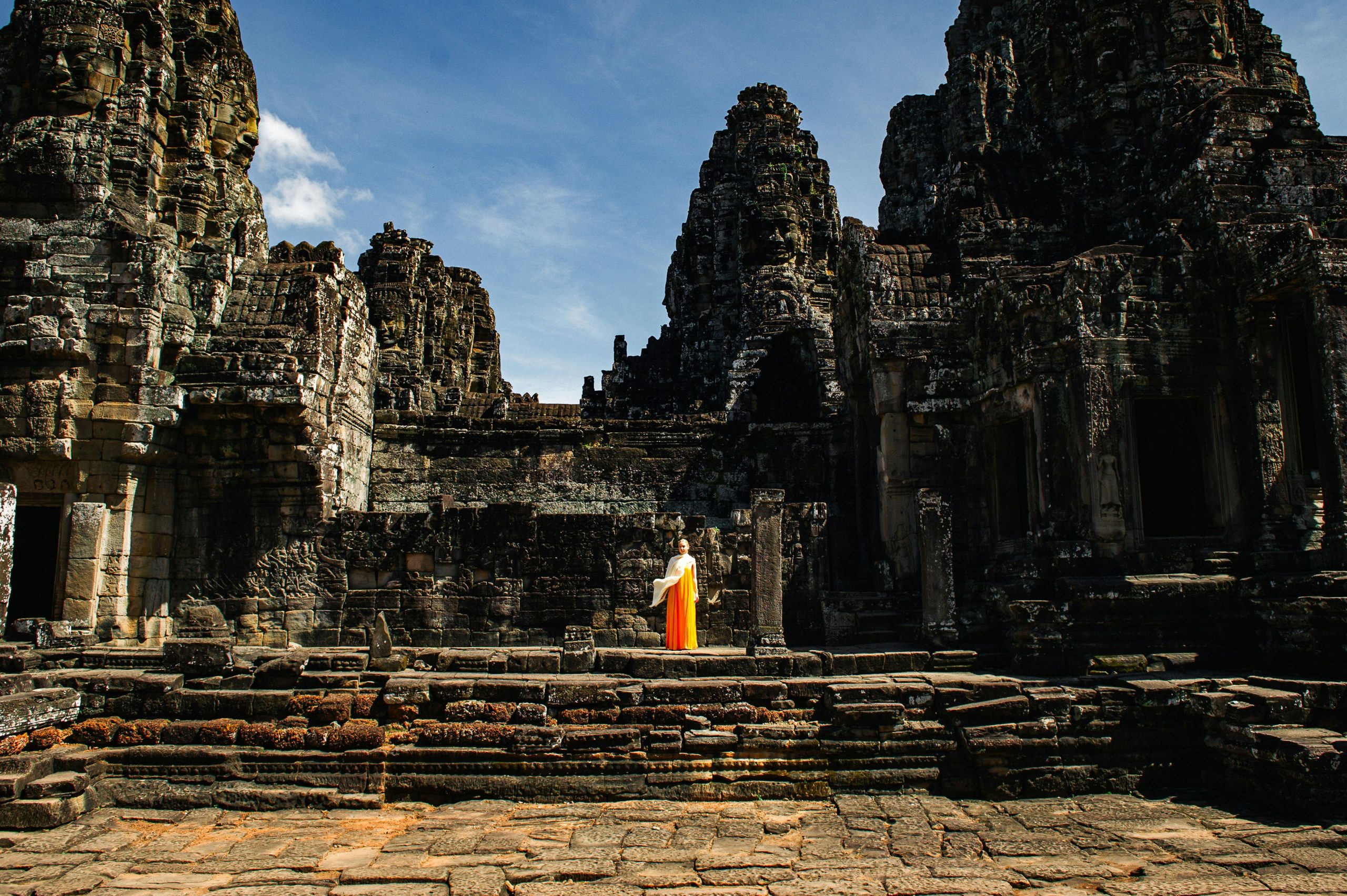Introduction: Embrace the Adventure of a Vietnam and Cambodia Itinerary
If you’re craving an adventure that’s both thrilling and enlightening, a Vietnam and Cambodia itinerary offers everything, vibrant culture, breathtaking landscapes, rich history, and unforgettable food. Nestled in Southeast Asia, these two countries present travelers with diverse experiences that contrast yet complement one another beautifully.
Why Choose Vietnam and Cambodia Together?
The charm of Vietnam lies in its contrasts, from chaotic city streets to tranquil countryside. In contrast, Cambodia invites you to step back in time with its ancient temples and serene villages. When you combine them, the itinerary for Vietnam and Cambodia becomes a journey through both cultural dynamism and timeless heritage.
Transitioning between the two countries is smooth and enriching. A well-planned Vietnam and Cambodia travel itinerary can help you make the most of your limited time without feeling rushed.
What Makes This Itinerary Epic?
You won’t just tick off tourist boxes. This 10-day plan is curated to immerse you in the heart of each place. You’ll eat with locals, cruise through otherworldly landscapes, and stand in awe before ancient wonders.
Here’s a quick breakdown of what to expect:
| Day | Destination | Highlight |
|---|---|---|
| Day 1–2 | Hanoi | Culture & Street Food |
| Day 3 | Ha Long Bay | Scenic Cruise |
| Day 4–5 | Hoi An | Ancient Town & Tailoring |
| Day 6 | Ho Chi Minh City | History & Modern Life |
| Day 7 | Phnom Penh | History & Night Markets |
| Day 8 | Siem Reap | Angkor Wat |
| Day 9 | Tonlé Sap Lake | Floating Villages |
| Day 10 | Siem Reap | Reflection & Departure |
This Vietnam and Cambodia itinerary is about movement, but it’s also about meaning. Let’s dive into the journey.
Day 1–2: Begin in Hanoi, Vietnam: Dive into Culture and Street Food
The starting point of your Vietnam itinerary is the vibrant capital, Hanoi. This city is a perfect blend of the old and new, where French colonial architecture meets buzzing street vendors and chaotic motorbike-filled streets. Begin your Vietnam and Cambodia itinerary with two days in Hanoi to soak up culture, cuisine, and atmosphere.
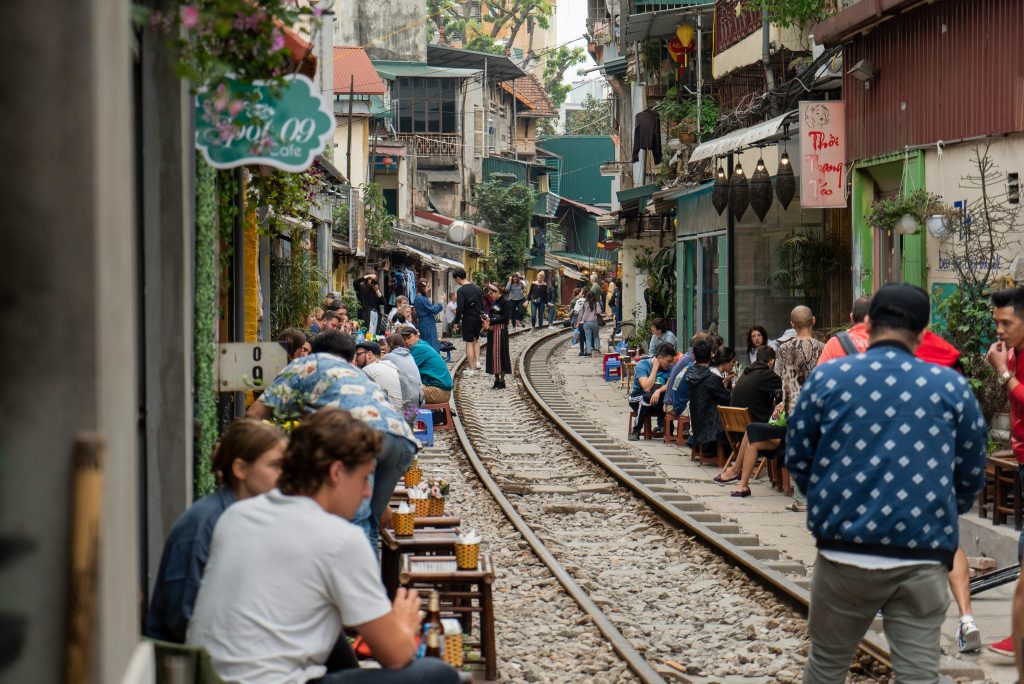
What to Do in Hanoi
Start your morning with a stroll around Hoan Kiem Lake, where locals practice tai chi at sunrise. It’s a peaceful scene that sets the tone for your exploration. Nearby, visit Ngoc Son Temple, a small spiritual island in the middle of the lake.
Walk north into the Old Quarter, where 36 narrow streets specialize in everything from silver to silk. This area is ideal for those who enjoy a maze of culture, architecture, and commerce.
Be sure to visit:
- Temple of Literature – Vietnam’s first university, a symbol of learning and Confucian tradition.
- Hoa Lo Prison – A sobering site offering insights into the country’s struggle for independence.
- Thang Long Water Puppet Theatre – A traditional Vietnamese performance, delightful and culturally rich.
Eat Like a Local
One of Hanoi’s highlights is its street food. A Vietnam and Cambodia travel itinerary is incomplete without savoring local dishes, and Hanoi excels at offering:
- Pho – Vietnam’s national noodle soup, best tried in a small street-side stall.
- Bun Cha – Grilled pork and noodles, famously loved by Obama during his visit.
- Egg Coffee – A creamy, sweet drink that originated right here in Hanoi.
Pro Tips for Hanoi
- Cross streets with confidence, but slowly.
- Use a ride-sharing app like Grab to get around.
- Always have cash, especially in local markets.
After two days, you’ll feel the pulse of Vietnam. It’s time to escape the city chaos and trade it for natural tranquility.
Day 3: Cruise Through Ha Long Bay: A Highlight of Your Vietnam Itinerary
No Vietnam itinerary is complete without a day exploring Ha Long Bay, a UNESCO World Heritage Site that feels almost otherworldly. On day three of your Vietnam and Cambodia itinerary, you’ll drift through emerald waters dotted with limestone karsts that rise like mythical towers from the sea.

Getting There from Hanoi
Start early. The journey to Ha Long Bay takes about 2.5 to 3.5 hours by car or shuttle from Hanoi. Booking through a reputable tour company ensures smoother logistics and often includes meals and kayaking activities.
Transitioning from the energetic streets of Hanoi to the serene waters of Ha Long Bay feels like entering another realm. It’s a contrast that truly elevates this itinerary for Vietnam and Cambodia.
Cruise Highlights
There are several types of cruises: day trips, overnight cruises, and luxury liners. For a 10-day plan, a day cruise gives you ample experience without sacrificing time for other destinations.
What to Expect on a Day Cruise:
- Visit Sung Sot Cave (Surprise Cave) – With dramatic stalactites and hidden chambers.
- Kayaking or Bamboo Boat Ride – Paddle into hidden lagoons and caves.
- Ti Top Island – Climb the peak for panoramic views or relax on the beach.
- Seafood Lunch on Board – Often fresh-caught and prepared while you cruise.
Tips for an Unforgettable Ha Long Bay Experience
| Tip | Why It Matters |
|---|---|
| Bring a light jacket | Weather on the bay can be cooler and breezy |
| Wear waterproof shoes | For cave visits and kayaking |
| Choose smaller cruise operators | More personalized experience, fewer crowds |
With Ha Long Bay behind you, it’s time to shift again, from tranquil waters to the golden charm of Vietnam’s central coast.
Day 4–5: Explore Hoi An’s Ancient Charm: A Star of Any Vietnam and Cambodia Itinerary
As your Vietnam and Cambodia travel itinerary unfolds, Hoi An offers a magical midpoint. This UNESCO-listed town delivers serenity, history, and beauty all wrapped in lantern-lit charm. Over two days, you’ll walk through centuries of preserved culture, enjoy delicious food, and perhaps get a custom-made outfit, all at a relaxed pace.
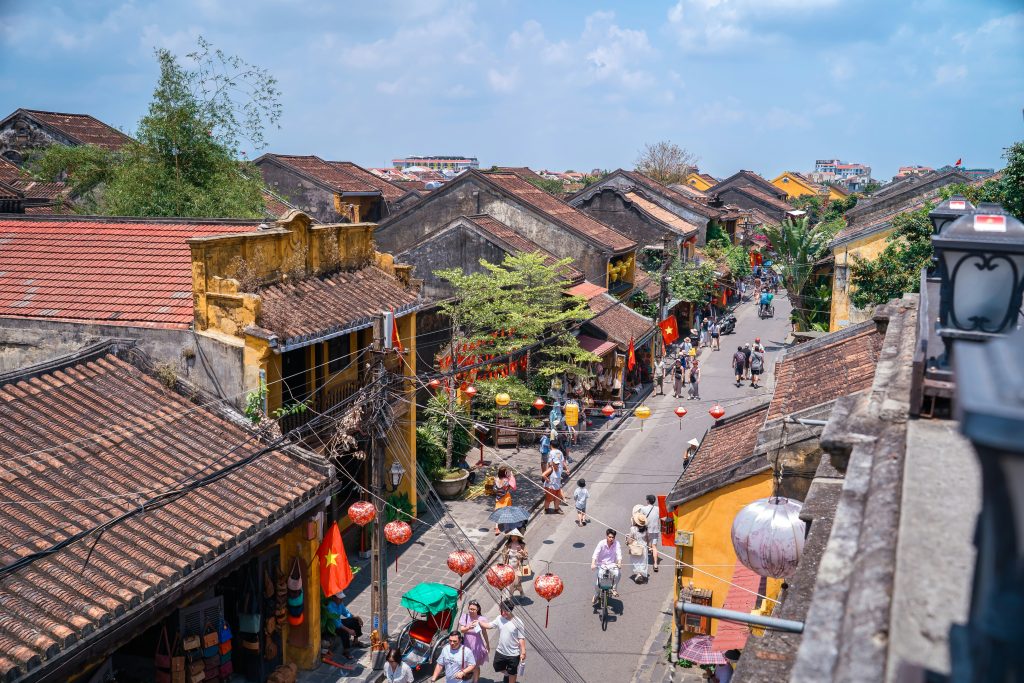
Getting to Hoi An
Fly from Hanoi to Da Nang (about 1.5 hours), then take a 45-minute car ride to Hoi An. Most domestic flights are affordable and frequent, making this transition smooth.
Day 4: Discovering the Ancient Town
Hoi An’s Ancient Town is pedestrian-friendly and packed with well-preserved merchant houses, assembly halls, and temples. A must-see on any Vietnam itinerary.
Top Sights to Visit:
- Japanese Covered Bridge – Symbolic and photogenic.
- Tan Ky House – A preserved 18th-century merchant home.
- Phuc Kien Assembly Hall – Vibrant and full of Chinese cultural influences.
Wander the town after sunset to experience its full magic. Lanterns glow across the river, and traditional music fills the air.
Pro Tip: Buy a Hoi An Old Town ticket. It covers entry to five historical buildings and supports preservation.
Day 5: Cultural Experiences and Local Flavor
On your second day, dig deeper into Hoi An’s offerings:
- Take a cooking class – Learn to make classic Vietnamese dishes like Cao Lau and spring rolls.
- Visit Tra Que Vegetable Village – Ride a bike through local farms and even try planting.
- Tailor-made clothes – Have a suit or dress made in just 24 hours.
Sample Daily Schedule:
| Time | Activity |
|---|---|
| 8:00 AM | Breakfast & morning market visit |
| 10:00 AM | Walking tour of Ancient Town |
| 1:00 PM | Lunch by the riverside |
| 3:00 PM | Bike to the countryside |
| 6:00 PM | Lantern-lit evening & dinner |
Hoi An blends cultural depth with calm ambiance. After two unforgettable days, your Vietnam and Cambodia itinerary now heads south to Vietnam’s largest city.
Day 6: Discover Ho Chi Minh City: Where Modern Energy Meets Rich History
As your Vietnam and Cambodia itinerary continues, Ho Chi Minh City (formerly Saigon) offers a dramatic shift in pace and energy. Known for its skyscrapers, markets, motorbikes, and vibrant street life, it’s a city where modernity collides with historical depth. You only have one day here, but it’s packed with meaning.
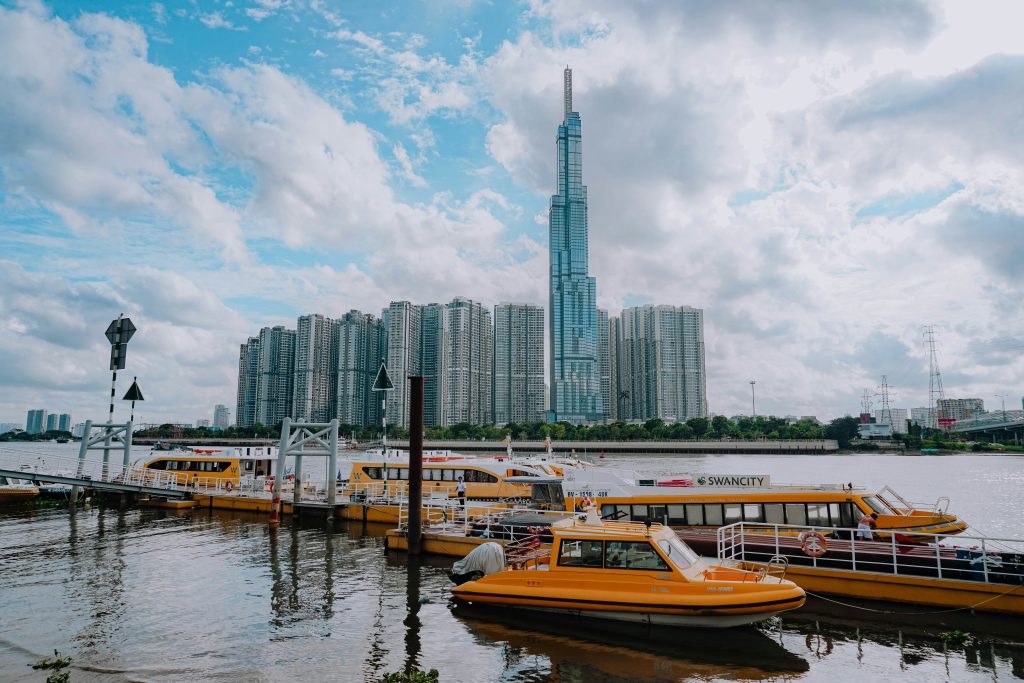
Morning: Dive into History
Begin your day by stepping back in time. If you’re following a thoughtful itinerary for Vietnam and Cambodia, these are must-sees:
- War Remnants Museum – Offers a sobering, powerful look at the Vietnam War through local eyes.
- Independence Palace – Also known as the Reunification Palace, where the war officially ended in 1975.
Next, take a short walk to Notre-Dame Cathedral and Saigon Central Post Office, remnants of French colonial architecture.
Midday: Enjoy a Local Lunch
Stop by Ben Thanh Market for a bustling, flavorful lunch experience. Sample:
- Banh Xeo – Crispy rice pancakes filled with shrimp and herbs.
- Hu Tieu – A southern noodle soup with pork and seafood.
- Fresh sugarcane juice – Ideal for Vietnam’s southern heat.
Afternoon: Local Life and Hidden Gems
After lunch, explore the lesser-known gems:
- Jade Emperor Pagoda – A spiritual and architectural marvel.
- Nguyen Hue Walking Street – Great for people-watching and soaking in city vibes.
- Cafe Apartment – A multi-story building with trendy cafes on each floor.
Quick Tips for Exploring Saigon
| Tip | Benefit |
|---|---|
| Use a motorbike taxi (GrabBike) | Fast, affordable, and fun way to get around |
| Watch your belongings | Pickpocketing can happen in crowded places |
| Dress light | It’s hot year-round in the south |
This energetic city marks your final stop in Vietnam. Now, your Vietnam and Cambodia travel itinerary leads you across the border, into the heart of Cambodia.
Day 7: Journey to Phnom Penh: A City of Contrasts, History, and Hope
Crossing into Cambodia introduces a different rhythm to your Vietnam and Cambodia itinerary. Phnom Penh, Cambodia’s capital, is often overlooked, yet it offers a profound and essential perspective on the country’s modern history, resilience, and culture. It’s a city of contrasts where glistening pagodas rise beside reminders of past tragedy.
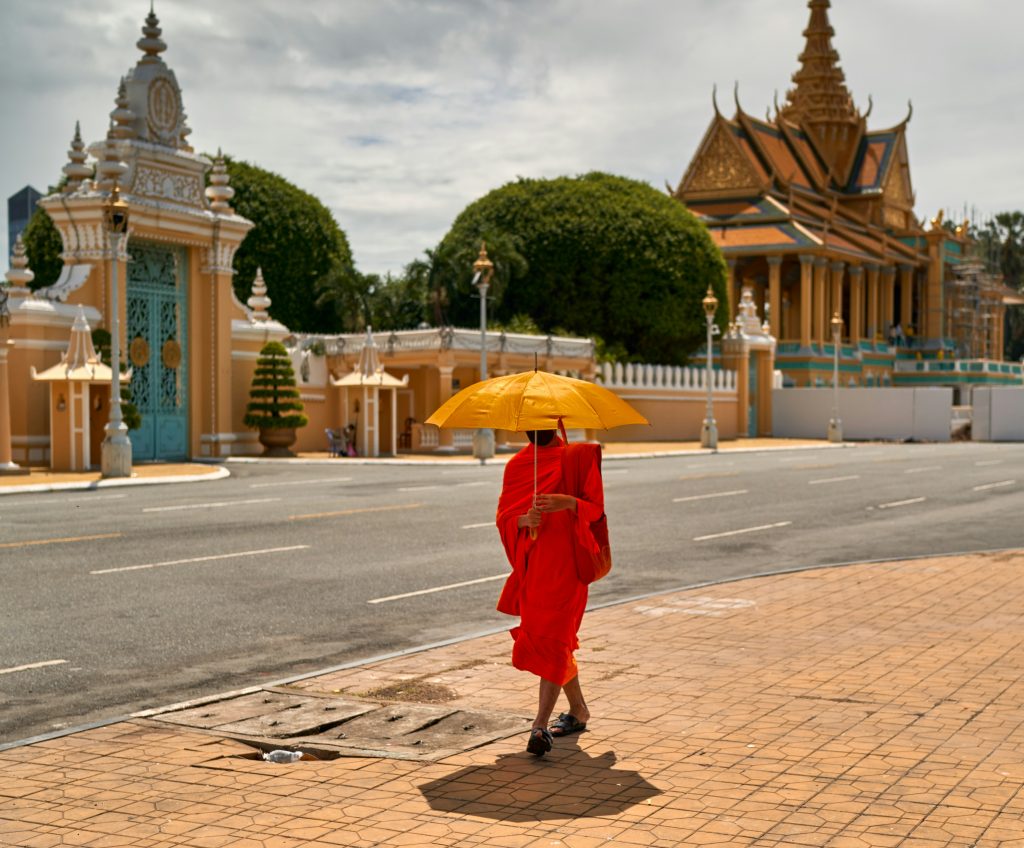
Morning: Arrival and Settling In
If you’re flying, the journey from Ho Chi Minh City to Phnom Penh takes just under an hour. Some travelers prefer the overland route, which offers a deeper look into rural Cambodia, but flying saves time on this tight itinerary for Vietnam and Cambodia.
Check in to your hotel and enjoy a quiet Cambodian breakfast of Bai Sach Chrouk (pork and rice with pickled veggies).
Midday: Confronting History at Tuol Sleng and Killing Fields
Spend the afternoon understanding Cambodia’s recent past, which is crucial to appreciating its present:
- Tuol Sleng Genocide Museum (S-21) – A high school turned prison under the Khmer Rouge. Sobering, respectful, and educational.
- Choeung Ek Killing Fields – Just outside the city, this memorial site offers audio-guided tours that respectfully document the atrocities committed.
While emotionally heavy, visiting these places is an act of empathy and a reminder of the human spirit’s resilience.
Evening: Riverfront Revival and Night Markets
After a reflective day, transition to Phnom Penh’s lighter side:
- Sisowath Quay – A riverside promenade ideal for an evening walk. Locals gather here to exercise, relax, and socialize.
- Phnom Penh Night Market – Browse local crafts, try Cambodian street food like Lok Lak or Num Pang, and soak up the night energy.
Must-Know Tips for Phnom Penh
| Tip | Reason |
|---|---|
| Dress modestly for museums | Shows respect, especially at historical sites |
| Use USD or Riel interchangeably | Both currencies are accepted almost everywhere |
| Stay hydrated | The climate is hot and humid year-round |
This day is both somber and uplifting, a powerful stop that grounds your Vietnam and Cambodia travel itinerary in context and meaning. Next, you’ll witness the spiritual heart of Cambodia.
Day 8: Siem Reap and the Temples of Angkor: Walk in the Footsteps of Kings
Your Vietnam and Cambodia itinerary now reaches its spiritual and historical crescendo: Angkor Wat and the sprawling temple complex surrounding it. Based in Siem Reap, this region offers an awe-inspiring glimpse into the height of the Khmer Empire. Today, you’ll be walking among ancient stone giants, jungle-wrapped ruins, and centuries-old carvings.

Early Morning: Sunrise at Angkor Wat
Start early — really early. Watching the sunrise behind the five iconic towers of Angkor Wat is a moment travelers never forget. The reflection in the moat creates a perfect photo opportunity and a deeply calming atmosphere.
This temple is the largest religious monument in the world, and it’s not just the scale that’s impressive. The intricate carvings, bas-reliefs, and towering corridors tell stories of mythology, history, and devotion.
Late Morning: Temple-Hopping Highlights
After Angkor Wat, continue exploring other significant temples in the Angkor Archaeological Park:
- Bayon Temple – Famous for its serene stone faces and maze-like design.
- Ta Prohm – Known as the “Tomb Raider” temple, where trees grow through and around crumbling ruins.
- Banteay Srei – Often called the “jewel of Khmer art” for its pink sandstone and detailed carvings (optional but worth it).
Don’t try to see every temple. Instead, focus on a few and take your time.
Afternoon: Local Culture in Siem Reap
After a temple-packed morning, cool off and explore local culture in Siem Reap town:
- Angkor National Museum – Excellent for context about what you’ve just seen.
- Old Market (Psar Chas) – Ideal for souvenirs, textiles, and local snacks.
- Artisans Angkor – A workshop where you can see traditional crafts being made.
Pro Tips for Visiting the Temples
| Tip | Why It Helps |
|---|---|
| Wear breathable, modest clothing | Required for temple entry and heat comfort |
| Bring water and sun protection | Shade is limited, and it gets hot quickly |
| Hire a licensed guide | Adds depth to your visit, making it unforgettable |
The temples of Angkor are more than tourist sites, they are symbols of identity, resilience, and reverence. This stop on your itinerary for Vietnam and Cambodia may be the most impactful.
Day 9: Explore Tonlé Sap and Local Life: Meet Cambodia’s Floating Communities
Just beyond the temples of Angkor lies another side of Cambodia, one that moves with the rhythm of the water. On day nine of your Vietnam and Cambodia travel itinerary, leave the ancient world behind and enter the dynamic life of Tonlé Sap Lake, Southeast Asia’s largest freshwater lake.
Here, you’ll witness daily life shaped by nature and resilience.
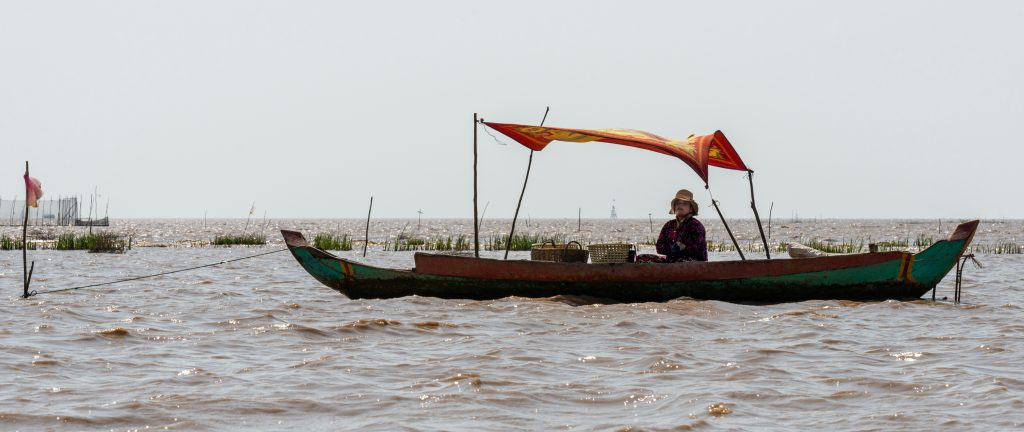
Morning: Boat Tour Through the Floating Villages
Set out early to explore Kompong Phluk or Chong Khneas, two of the region’s most well-known floating villages. As you glide along the lake’s wide expanse and canals, you’ll see:
- Stilt houses and floating homes that rise and fall with the water levels
- Floating schools and temples, centers of community and education
- Fishing boats and local markets, where families carry out their livelihoods on water
Tonlé Sap isn’t just scenic; it’s essential to the country’s food security and ecosystem. The people here are resourceful and deeply connected to the lake’s rhythms.
Midday: Visit a Local Home or School (Optional)
Some tours include optional visits to a floating classroom or local home (always choose ethical operators that respect local dignity). If you go, this experience offers a personal connection that adds depth to your Cambodia itinerary.
You’ll gain insight into:
- How seasonal changes shape village life
- Education and healthcare challenges in rural areas
- Traditional fishing and farming techniques
Afternoon: Return to Siem Reap for Rest and Reflection
After a moving morning, head back to Siem Reap. Treat yourself to a relaxing afternoon:
- Foot massage – Widely available and very affordable
- Cool drinks at a rooftop café – A great way to unwind and review photos
- Dinner with a view – Try traditional dishes like Amok or Khmer curry
Local Tip:
| What to Bring | Why You Need It |
|---|---|
| Binoculars | Ideal for bird watching and wildlife |
| Eco-friendly sunscreen | Protects both your skin and the lake |
| Small cash | Useful for tips and small purchases |
Tonlé Sap offers something different: a quiet, authentic connection to Cambodia’s lifeblood, its people and their stories.
Day 10: Farewell in Style: Reflect, Relax, and Plan Your Next Adventure
The final day of your Vietnam and Cambodia itinerary deserves more than a rushed airport trip. Whether you’re flying home today or staying one more night, make your last hours in Cambodia meaningful and relaxed. After days packed with temples, cities, and landscapes, it’s time to exhale, and reflect on what this journey has meant.
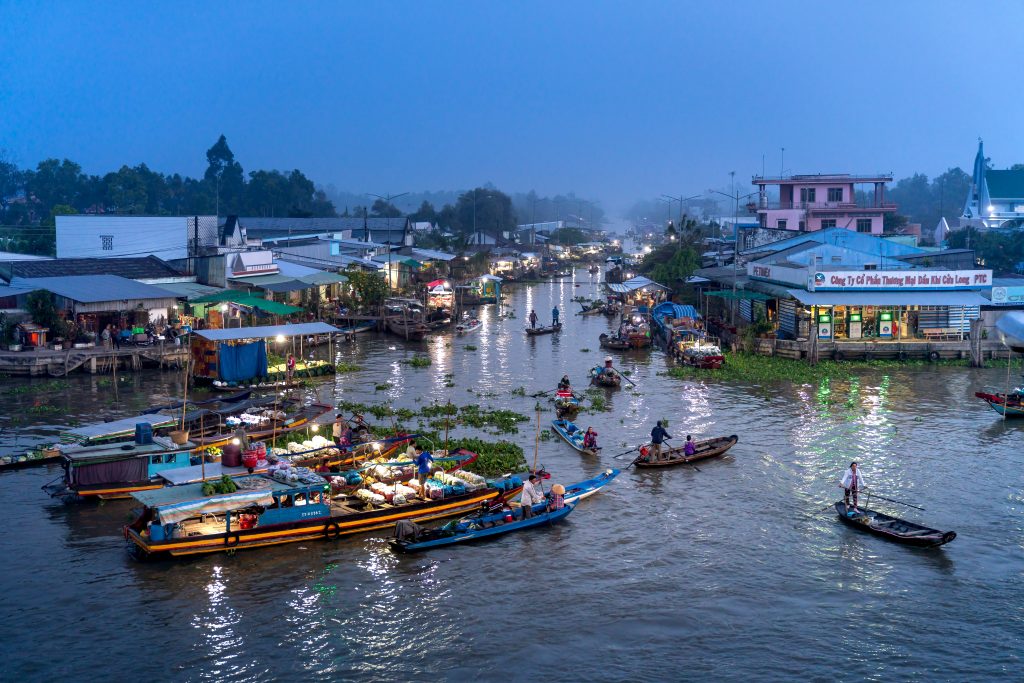
Morning: A Slow Start in Siem Reap
Start your morning without an alarm. Enjoy a slow breakfast, perhaps at a peaceful riverside café. Reflect on the past nine days while sipping Cambodian coffee or a fresh fruit smoothie.
If time allows, take one last stroll through:
- The Royal Gardens – Small but scenic, and often quiet in the morning
- Wat Bo Temple – A beautiful spot with fewer tourists and intricate murals
- Made in Cambodia Market – Great for last-minute, ethical souvenirs
Optional Experiences Before Departure
Depending on your flight time, consider one last cultural activity:
- Pottery class or traditional art workshop
- Khmer cooking class: Prepare and enjoy your own farewell feast
- Apsara dance performance: Some restaurants offer lunchtime shows
Any of these help close your Vietnam and Cambodia travel itinerary on a high note: creative, enriching, and relaxed.
Saying Goodbye (for Now)
It’s hard not to feel transformed. In just 10 days, you’ve walked ancient temple corridors, floated across silent waters, dined on rooftops, and stood where history unfolded. You’ve met people who shaped your view of this part of the world.
This isn’t just an itinerary; it’s a window into Southeast Asia’s soul.
Final Travel Checklist
| Task | Tip |
|---|---|
| Confirm your airport transfer | Allow at least 3 hours before your flight |
| Print or download your e-ticket | Wi-Fi can be inconsistent near the airport |
| Pack snacks for the flight | Airport food is limited and expensive |
Though your adventure ends here, the memories, and the inspiration to explore more, will linger long after wheels lift off the runway.
Pro Travel Tips for Vietnam and Cambodia: Smart Advice to Maximize Your Itinerary
Before closing your unforgettable journey, take note of these essential tips. Whether you’re crafting your first Vietnam and Cambodia itinerary or planning a return trip, these insights can save time, money, and stress, while adding more meaning to your experience.
General Travel Tips
- Visas: Apply online for e-visas for both countries. Vietnam and Cambodia both offer efficient digital options.
- Currency:
- Vietnam: Vietnamese Dong (VND)
- Cambodia: Cambodian Riel (KHR), but USD is widely used
- Language:
- Vietnam: Vietnamese
- Cambodia: Khmer
- English is commonly spoken in tourist areas
Transportation Tips
| Mode | Tip |
|---|---|
| Flights | Book internal flights early, prices rise quickly |
| Taxis & Grabs | Use Grab (ride-hailing app) for ease and safety |
| Border Crossing | If crossing by land, research visa requirements first |
Pro Tip: Use airport SIM card booths for easy data access, it’s cheap and reliable.
Food & Water Safety
- Stick to busy street food stalls, they usually have higher turnover and fresher food.
- Avoid raw vegetables in rural areas unless they’ve been washed in bottled water.
- Only drink bottled or filtered water. Avoid ice in remote areas unless you’re sure it’s filtered.
Health & Safety Tips
- Carry insect repellent, especially in rural or lake areas like Tonlé Sap.
- Use sunscreen and wear a hat during temple visits.
- Travel insurance is a must for both countries.
Cultural Etiquette
| Situation | What to Do |
|---|---|
| Visiting temples | Dress modestly: shoulders and knees covered |
| Entering homes or pagodas | Remove shoes, ask before taking photos |
| Tipping | Not expected but appreciated, round up or 10% max |
When to Travel
- Best Time: November to April, dry season with cooler temperatures
- Avoid: July to September if you dislike heavy rain
Packing Essentials
- Lightweight, breathable clothing
- Waterproof sandals or walking shoes
- Travel plug adapter (Type A, C, or G)
- Sunscreen, hat, and sunglasses
- Copies of your passport and travel insurance
These practical tips help turn a great Vietnam and Cambodia travel itinerary into a smooth and stress-free journey. With a little preparation, you’ll enjoy every breathtaking moment.
Conclusion: The Journey That Changes You
From ancient temples and floating villages to vibrant cities and hidden gems, this Vietnam and Cambodia itinerary is more than a trip, it’s a story you’ll tell for a lifetime. If you’re planning more adventures after your Vietnam and Cambodia trip, don’t miss our guide to the 10 Best Southeast Asia Backpacking Routes to Explore, it’s packed with inspiration for your next journey.
If this guide inspired your next adventure or helped you plan your route, leave a comment below and share this post with fellow travelers. Your thoughts and stories matter, and may help someone else take the leap.

